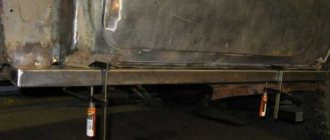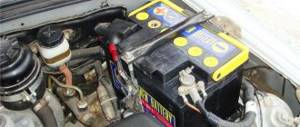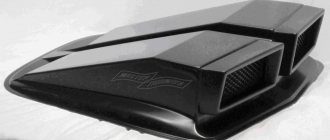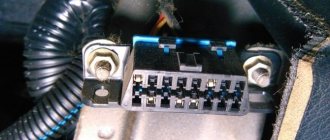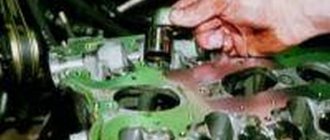Replacing hydraulic compensators on Niva Chevrolet
The transition from adjusting bolts to hydraulic compensators (HC) made it possible to abandon the need to adjust thermal clearances every 10 thousand kilometers. The operating principle of hydraulic compensators, as well as their diagnostics, are described in the article Why hydraulic compensators knock when hot and cold. In this article we will talk about how to change hydraulic compensators on a Chevrolet Niva with your own hands. Such a replacement is necessary if the problem is not in the oil system or inappropriate engine oil, but in the malfunction of these parts. Niva Chevrolet hydraulic compensators often cause trouble for car owners - valves knock, the engine begins to work intermittently.
Design of hydraulic compensators on Niva Chevrolet
On all classic VAZ engines, rockers were installed in the gas distribution mechanism, and valve clearances were adjusted using special screws. The engine systems of the 2123 Niva Chevrolet models are equipped with hydraulic shock absorbers, which are similar in shape to adjusting bolts. Clearance holes are eliminated due to displacement elements and the required oil pressure in the engine. The design, complex at first glance, consists of the following parts:
- Hydraulic compensator housing.
- Return spring.
- A plunger pair, which is divided into two parts - upper and lower.
Reasons for the characteristic knocking sound:
- lack of oil pressure in the system;
- the oil channels in the engine are dirty, causing the entire lubrication system to become clogged;
- lack of oil material in the design;
- the area intended for the hydraulic compensator is worn out;
- parts and components of the device designed to automatically adjust the thermal clearances of engine valves have worn out.
Why do Chevrolet Niva valves knock?
On regular “Classic” VAZ engines, rockers are installed in the gas distribution mechanism, and the valve clearances are adjusted with screws. On VAZ-2123 engines, instead of screws, hydraulic compensators are installed - they are made in the form of the same adjusting screws, but excess gaps in the hydraulic device are removed due to a plunger pair operating under oil pressure. The hydraulic compensator on the Shevinivsky engine is designed very simply, and consists of four parts: • the body itself; • return spring; • the lower and upper parts of the plunger pair (check valve with piston and the plunger itself). Valve knocking in the Chevrolet Niva timing belt can occur for several reasons:
• there is insufficient oil pressure in the system; • the engine oil is dirty, the oil channels are clogged; • insufficient oil level in the lubrication system; • the seat for the compensator is worn out; • the parts themselves are of low quality and therefore require replacement. Often the hydraulic compensators (HC) of the Chevy Niva knock only when cold, and after 30-40 seconds the knock disappears. The reason for this phenomenon is the supply of oil pressure to the hydraulics with a slight delay. To get rid of this problem, you can try replacing the oil and oil filter. When the valves knock “hot” - this is worse, you need to remove the camshaft from the main body and clean the channels. If flushing does not help, the hydraulic compensators need to be replaced.
Hydraulic compensator for Niva Chevrolet
Valve knocking can be different, and it does not always occur due to the fault of hydraulic valves; it can be caused by:
• worn camshaft cams; • worn rocker surfaces; • wear of the end of the valve stem itself.
But it often happens the other way around - due to hydraulic compensators, intense wear of the rockers and camshaft occurs.
It is not recommended to drive with valve knock:
• parts of the gas distribution mechanism fail; • due to large valve clearances, engine power decreases and fuel consumption increases; • listening to such a knock is unpleasant.
Everything you need for replacement
To work you will need the following tools and materials:
• flat and Phillips screwdrivers; • ratchet wrench with extension and set of attachments; • socket wrench (tube) for 10 and 12; • soft wire, wire or plastic clamps; • torque wrench; • valve cover gasket; • clean rag.
Replacing hydraulic compensators VAZ 21214
July 31, 2020 — 16:29 10754 views
Most modern cars, regardless of model and brand, are equipped with hydraulic compensators, which allow the gaps that appear in the gas distribution mechanism to be automatically eliminated.
Installation or replacement of VAZ 21214 hydraulic compensators should be carried out only after studying all the processes and parts that may somehow come into contact with the hydraulic valve.
A special gas distribution mechanism plays a very important role in an internal combustion engine. This role consists of distributing air or any combustible mixture among the engine cylinders, as well as releasing exhaust gases.
It is worth noting that the gas distribution mechanism consists of several parts, among which are the following:
- valves with springs;
- camshaft;
- rods;
- pushers;
- rocker arms
Replacing VAZ 21124 and VAZ 21214 hydraulic compensators should only be carried out if you know exactly the order of closing and opening the valves.
By the way, it is set thanks to special protrusions, which are irreplaceable components of the camshaft and are called cams. There are two variations of the camshaft location:
- at the bottom of the cylinder block;
- in the cylinder head the upper part.
The crankshaft transfers special energy to the camshaft, with the help of which they operate.
Provided that the camshaft is located in the lower position, used to open the valves, which is transmitted through rods, rocker arms and pushers. If the camshaft is located on top, then the force is transmitted through special pushers.
It is worth noting that the transmission of force using a barbell or lever is also possible. Moreover, when the engine reaches maximum operating temperature, various parts related to the gas distribution mechanism may heat up, which may cause these parts to increase in size. As a matter of fact, it is precisely this fact that leads to insufficiently tight closing of these valves, which negatively affects the operation of the engine.
For this purpose, a special gap is provided to prevent insufficient tightness of the part. Most often, such a gap can be a fraction of a millimeter, and it is installed exclusively separately from the exhaust and intake valves. Sometimes the clearance can increase, most often this is due to engine wear, which means that the valves will need to be adjusted. Such manipulation is considered quite responsible and incredibly difficult, since if the gap is set incorrectly, the parts may close incorrectly or loosely.
Because of this, various knocking noises may appear, which lead to accelerated wear of the gas distribution mechanism. Thanks to VAZ 21214 hydraulic compensators, you can avoid such problems and help the engine valves of a particular car operate without knocking and close tightly.
The principle of operation of the GC itself is to vary depending on the size of the specified gap, which is in the gas distribution mechanism. The action of a special spring increases its length by moving parts. The oil supplied from the machine’s engine lubrication system also plays an important role in this process.
VAZ 21124 hydraulic compensators consist of the following elements:
- check valve;
- plunger pair;
- frame;
- plunger springs.
When replacing VAZ 21214 hydraulic compensators, it is important to take into account the fact that these parts work like this:
- First, a force is transmitted from the camshaft cam located in the engine to the pusher, due to which a certain impact is caused on the plunger by the plunger pair.
- Next, the plunger should come out of the sleeve, simultaneously selecting the specified gap.
- After this, oil begins to flow through the valve, which is in a special lubrication system designed for the car engine.
- Only when there is already enough oil can a special ball valve close, thereby eliminating the access of oil using a spring.
- After the cam has turned its convex side towards the pusher, it begins to move it down, pressing on it. It is worth noting that the force from this unit is transmitted to the timing valve.
- Immediately after this, a fairly small amount of oil is pushed out through special gaps, due to which the VAZ 2114 hydraulic compensator decreases in length, thereby creating a small gap.
Absolutely all leaks that may occur due to the operation of this mechanism are compensated by the supply of oil. By the way, the oil comes from the engine lubrication system. Also, during operation, all parts heat up and expand, which affects a certain amount of oil supplied again.
Such actions of the gas distribution mechanism undoubtedly help reduce wear on various parts of the gas distribution mechanism.
If you decide to replace the hydraulic compensator of a VAZ 21124 or any other VAZ model, then using our website you can purchase a set of parts that are necessary for such a replacement. This can be done in a matter of time by contacting the supplier or simply posting your ad on the website.
How to change hydraulic lifters on a Chevrolet Niva video
If you are going to change the HA outdoors, then find a clean, dry, level area and work on a windless and sunny day. Wait until the engine has completely cooled down. If you open the hood, this process will go faster. Place the gear in neutral and disconnect the battery. Now you can start replacing the hydraulic compensators. For your convenience, we have created a step-by-step guide to help you with this. 1.
Remove the plastic cover over the engine (not available on all models).
2.
Using a screwdriver, loosen the clamps of the pipe connecting the injector and the air filter, then remove the pipe.
3.
Make sure all rubber tubes that fit to the cylinder head (cylinder head).
4.
Unscrew the valve cover bolts and remove it.
5.
Align the camshaft gear to the mark.
The mark is located on the camshaft cover (not to be confused with the valve cover) and the back of the sprocket. If you do not do this in advance, it will be more difficult to assemble the motor after replacing the main valve, and if there is a lack of experience and attention, the valves may be damaged. 6.
Using wire or plastic clamps, secure the chain to the camshaft gear.
7.
Fix the camshaft sprocket (you can use socket wrenches for this) and unscrew the nut securing it.
8.
Unscrew the two bolts securing the chain tensioner and carefully, without bending the tube that fits it, remove the tensioner from the chain.
9.
Carefully remove the sprocket from the camshaft.
10.
Unscrew the nut of the main oil line (ramp) and the clamp bolts.
11.
Unscrew the camshaft nuts, then carefully remove it.
At the same time, you can check its condition and replace it if necessary. 12.
Remove all rockers, being careful not to lose the springs that hold them in place.
13.
Unscrew the hydraulic compensators.
14.
Remove the oil rail.
Perform this operation very carefully so as not to bend the thin tubes. 15.
Use a clean cloth to remove dirt from the main fluid wells.
Don't forget to wipe the oil rail. 16.
Reinstall the oil rail and screw in the new hydraulic valves. Tightening torque 2 kg•s (20 N•m).
17.
Reinstall the rocker with springs and the camshaft, first turning it to the desired angle.
Tightening torque 2 kg•s (20 N•m). 18.
Place the sprocket on the camshaft and secure with a bolt.
The bolt tightening torque is 4 kg•s (40 N•m). 19.
Reinstall the hydraulic chain tensioner and secure with bolts.
Tightening torque 2 kg•s (20 N•m). 20.
Put on the camshaft cover (not the valve cover) and the ramp mounts, then tighten the nuts with a torque of 2 kg•s (20 N•m).
21.
Tighten the ramp nut with a torque of 2.5–3 kg•s (25–30 N•m).
22.
Check the marks on the camshaft and crankshaft. Then turn the crankshaft two turns and check again.
23.
Install the valve cover.
Sometimes you have to change the valve cover gasket, but not on all engines. This may be due to the poor quality of the gaskets. If the gasket is in order, is not jammed or torn anywhere, then there is no need to change it. 24.
Connect all rubber hoses and the air filter pipe and put on the plastic casing.
25.
Connect the battery and start the engine. At first, the hydraulic compensators will knock, but within 20–50 seconds they will fill with oil and quiet down. If the new main engines continue to knock, raise the engine speed to 2 thousand for 1-2 minutes to increase the oil pressure.
Which is better - hydraulic lifters or adjusting bolts?
Hydraulic compensators installed from the factory are not always of high quality, and can begin to knock even after a short mileage. In some cases, the cause of the knocking is an untwisted main valve, that is, it was not tightened with the proper force during installation (tightening 2-2.2 kgf). But if the parts are already inoperable, the question arises - how to replace the faulty hydraulic valves. The most reliable in the automotive market are considered to be the hydraulic compensators of the German company INA; also for the Chevy Niva, hydraulic compensators are produced by AvtoVAZ, and the hydraulic compensators are of the old and new type, they differ in the cylinder heads (cylinder heads became different for cars produced after 2008). Hydraulic compensators are mainly sold individually, but they are not cheap - the price of one AvtoVAZ group is approximately 330-400 rubles, while an adjusting bolt costs only 30-50 rubles. If the driver agrees to adjust the valves every 10 thousand km, then it is better to install the bolts - there are fewer problems and the repair is cheaper.
Adjusting bolts instead of hydraulic compensators on Niva Chevrolet

